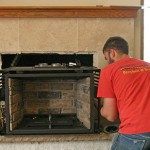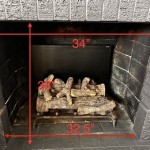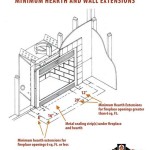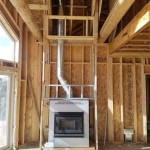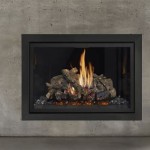The Enduring Appeal of a Stone Fireplace with Mantle
A stone fireplace with a mantle represents a significant addition to any home, combining aesthetic appeal with practical functionality. The enduring popularity of this design element stems from its ability to serve as a focal point within a room, while also providing supplemental heat and a sense of comfort. The selection of materials, design considerations, and installation processes all contribute to the overall quality and longevity of a stone fireplace with a mantle.
The incorporation of a stone fireplace introduces natural texture and visual interest. The mantle, traditionally a shelf above the fireplace opening, serves as both a decorative platform and a structural component. It provides space to display artwork, family portraits, or other personal items, further enhancing the fireplace's role as a central feature of the living space. The combination of the stone surround and the mantle creates a cohesive and visually balanced design, regardless of the style of the home.
Beyond aesthetic considerations, a stone fireplace offers efficient heat retention. Stone materials possess inherent thermal mass, allowing them to absorb and radiate heat long after the fire has subsided. This characteristic contributes to energy efficiency and can reduce reliance on central heating systems, particularly during colder months. The mantle, in addition to its decorative function, can also help to deflect heat away from the wall above the fireplace, protecting it from potential damage.
Material Selection for Stone Fireplaces
The selection of stone materials is a crucial aspect of designing a stone fireplace. The type of stone used significantly impacts the overall aesthetic, durability, and cost of the fireplace. Common choices include natural stone varieties such as granite, marble, limestone, slate, and fieldstone. Each stone type possesses unique characteristics in terms of color, texture, and porosity.
Granite, known for its durability and resistance to heat, is a popular choice for fireplace surrounds. Its dense composition makes it less susceptible to staining and scratching, ensuring long-term aesthetic appeal. Granite is available in a wide range of colors and patterns, offering versatility in design choices. The cost of granite can vary depending on the specific color and sourcing location.
Marble, a metamorphic rock prized for its elegant appearance, is often used in more formal settings. Its distinctive veining and polished surface create a luxurious aesthetic. However, marble is more porous than granite and requires sealing to prevent staining. It is also more susceptible to scratching and etching, necessitating careful maintenance. The cost of marble tends to be higher than that of granite.
Limestone, a sedimentary rock with a softer texture, offers a more rustic and natural look. Its neutral color palette makes it a versatile choice that complements various interior design styles. Limestone is relatively porous and requires sealing to protect it from moisture and staining. It is generally more affordable than granite or marble.
Slate, a fine-grained metamorphic rock, is known for its distinctive layered appearance and dark color. It is a durable and heat-resistant material that is well-suited for fireplace surrounds. Slate is less porous than limestone but still benefits from sealing to protect it from staining. It offers a more contemporary and understated aesthetic.
Fieldstone, comprised of naturally occurring stones gathered from fields or riverbeds, provides a uniquely rustic and organic look. The irregular shapes and varying colors of fieldstone create a distinctive texture. The cost of fieldstone can vary depending on its availability and the complexity of installation.
In addition to natural stone, manufactured stone veneers are also available. These products are made from a blend of cement and aggregates and are designed to replicate the appearance of natural stone. Manufactured stone veneers offer a more cost-effective alternative to natural stone and are lighter in weight, making them easier to install. However, the durability and aesthetic appeal of manufactured stone veneers may not match those of natural stone.
Mantle Design and Material Options
The mantle is an integral component of a stone fireplace, serving both aesthetic and functional purposes. The design and material of the mantle should complement the style of the stone surround and the overall interior decor. Common mantle materials include wood, stone, and metal. The dimensions of the mantle should be proportionate to the size of the fireplace and the room itself.
Wood mantles are a popular choice for their warmth and versatility. They can be crafted from various wood species, including oak, maple, cherry, and pine. The wood can be stained or painted to match the surrounding decor. Wood mantles can be simple and minimalist or elaborately carved, depending on the desired aesthetic. It is important to ensure that the wood mantle is properly insulated from the heat of the fireplace to prevent warping or cracking.
Stone mantles offer a cohesive and durable alternative to wood. They can be made from the same stone as the fireplace surround or from a contrasting stone for visual interest. Stone mantles are inherently fire-resistant and require minimal maintenance. However, they can be heavier and more challenging to install than wood mantles.
Metal mantles, typically made from steel or cast iron, provide a more contemporary and industrial look. They are durable and heat-resistant, making them a practical choice for modern fireplaces. Metal mantles can be powder-coated or painted in a variety of colors. They can also be customized with decorative details such as rivets or scrollwork.
The design of the mantle should consider its functionality as a display surface. The depth of the mantle should be sufficient to accommodate decorative items such as picture frames, vases, or candles. The height of the mantle above the fireplace opening should comply with building codes and safety regulations to prevent overheating.
Installation Considerations for Stone Fireplaces
The installation of a stone fireplace with a mantle is a complex process that requires expertise and attention to detail. It is essential to hire a qualified contractor with experience in fireplace installation to ensure proper construction and safety. The installation process typically involves preparing the foundation, constructing the firebox, installing the stone surround, and attaching the mantle.
The foundation must be strong enough to support the weight of the fireplace. In some cases, a reinforced concrete slab may be required. The firebox, the chamber where the fire burns, must be constructed according to building codes and safety standards. It should be lined with firebrick to protect the surrounding structure from heat.
The stone surround is typically installed using mortar. The stones should be carefully arranged to create a visually appealing pattern. Grout is then applied to fill the gaps between the stones. The type of mortar and grout used should be appropriate for the type of stone being installed.
The mantle is typically attached to the fireplace surround using screws or brackets. The attachment method should be strong enough to support the weight of the mantle and any decorative items placed on it. The mantle should be level and securely fastened to prevent it from falling.
Proper ventilation is crucial for the safe and efficient operation of a fireplace. The chimney must be properly sized and constructed to ensure adequate draft. The fireplace should be inspected annually by a qualified professional to ensure that it is functioning safely and efficiently.
Building codes and safety regulations vary depending on the location. It is important to obtain the necessary permits and comply with all applicable codes before installing a stone fireplace. Failure to comply with building codes can result in fines and penalties.
Regular maintenance is essential to preserve the aesthetic appeal and functionality of a stone fireplace. The fireplace should be cleaned regularly to remove soot and ash. The chimney should be inspected and cleaned annually to prevent creosote buildup, which can pose a fire hazard. The stone surround and mantle should be cleaned with a mild detergent and water. Any cracks or damage should be repaired promptly to prevent further deterioration.

Stone Fireplace Mantel Photos Ideas Houzz

Barnwood Fireplace Mantel The Collection

Country Style Mantels And Fireplaces Town Living

Search Results Fireplace Stacked Stone Fireplaces Mantel Design

Conrad Cast Stone Fireplace Mantel Old World Stoneworks

Magrahearth Natural Wood Concrete Mantel Fireplace Stone Patio

Result For Live Edge Fireplace Mantel With Stacked Stone Fireplaces Surround Corner

Upgrade Your Fireplace With A Natural Stone Mantle

Manhattan Cast Stone Fireplace Mantel Old World Stoneworks

Contemporary Cast Stone Fireplace Mantel
Related Posts

